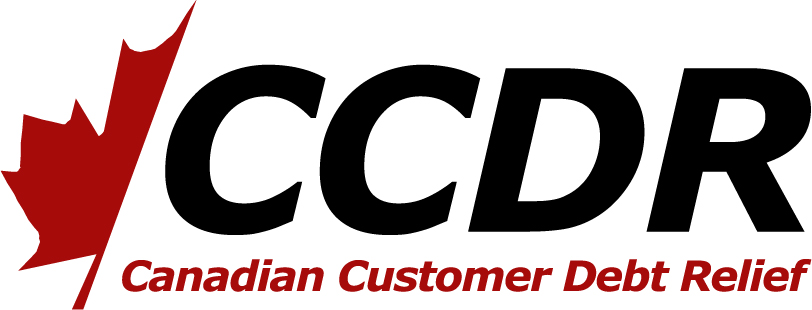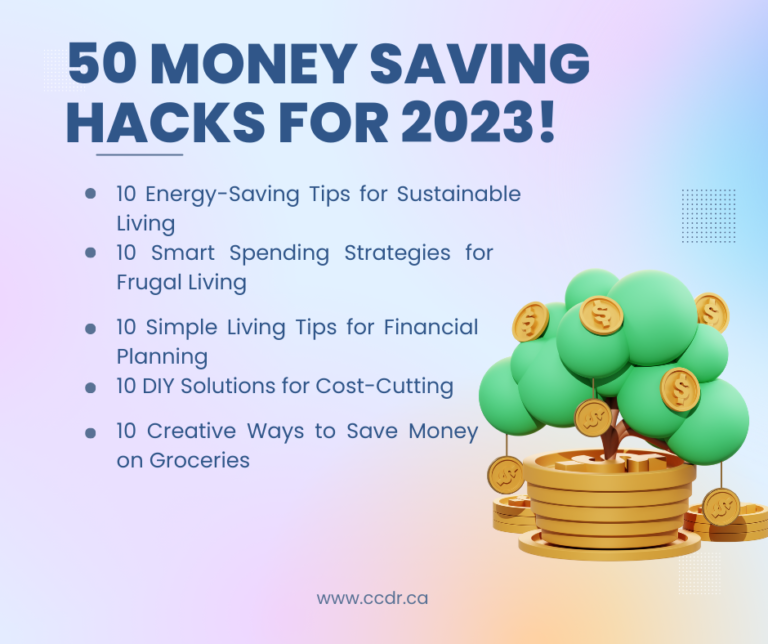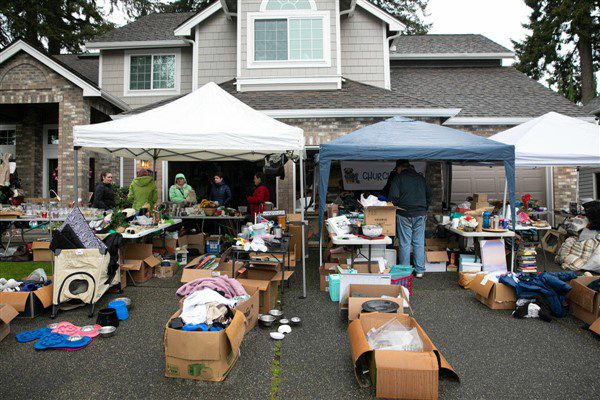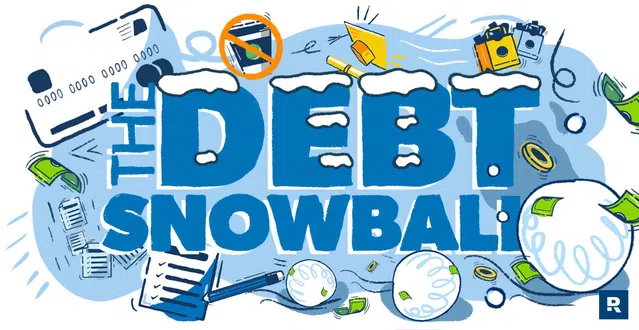Money Saving Tips
2023 Money-Saving Hacks for Frugal Living
-
Table of Contents
“2023: Unlock the Secrets to Frugal Living and Save Money Now!”
Introduction
Are you looking for ways to save money in 2023? With the cost of living on the rise, it’s important to find ways to save money and live frugally. Fortunately, there are plenty of money-saving hacks that can help you stretch your budget and make the most of your money. In this article, we’ll share 2023 money-saving hacks for frugal living that can help you save money and live a more financially secure life. From budgeting tips to smart shopping strategies, these hacks will help you make the most of your money and live a more frugal lifestyle.
10 Energy-Saving Tips for Sustainable Living in 2023
1. Invest in energy-efficient appliances: In 2023, energy-efficient appliances will be more affordable and widely available. Look for appliances with the Energy Star label, which indicates that they meet the highest standards for energy efficiency.
2. Install solar panels: Solar panels are becoming increasingly popular and cost-effective. Installing solar panels on your roof can help you save money on your energy bills and reduce your carbon footprint.
3. Use LED light bulbs: LED light bulbs are more energy-efficient than traditional incandescent bulbs. They also last longer, so you won’t have to replace them as often.
4. Unplug electronics when not in use: Even when electronics are turned off, they can still draw power. Unplugging electronics when not in use can help you save energy and money.
5. Install a programmable thermostat: Programmable thermostats allow you to set different temperatures for different times of the day. This can help you save energy by only heating or cooling your home when you need it.
6. Insulate your home: Proper insulation can help keep your home warm in the winter and cool in the summer. This can help you save energy and money on your energy bills.
7. Use natural light: Natural light is free and can help you save energy. Open your curtains and blinds during the day to let in natural light and reduce your need for artificial lighting.
8. Plant trees: Trees can help reduce energy costs by providing shade and blocking wind. Planting trees around your home can help you save energy and money.
9. Use a clothesline: Instead of using a dryer, hang your clothes on a clothesline to dry. This can help you save energy and money on your energy bills.
10. Buy local: Buying local products can help reduce your carbon footprint. Look for locally-sourced food and other products to help reduce your energy consumption.
10 Smart Spending Strategies for Frugal Living in 2023
1. Make a budget and stick to it: The most important step to living frugally is to create a budget and stick to it. This will help you stay on track with your spending and ensure that you are not overspending.
2. Shop around for the best deals: Don’t just settle for the first price you see. Take the time to shop around and compare prices to get the best deal.
3. Buy in bulk: Buying in bulk can save you money in the long run. Look for bulk discounts and stock up on items that you use regularly.
4. Use coupons and discounts: Coupons and discounts can help you save money on everyday items. Take the time to look for coupons and discounts before you make a purchase.
5. Buy used items: Buying used items can save you a lot of money. Look for second-hand stores or online marketplaces to find great deals.
6. Make your own meals: Eating out can be expensive. Instead, try making your own meals at home. This will save you money and you can control the ingredients you use.
7. Cut back on entertainment expenses: Entertainment expenses can add up quickly. Try to find free or low-cost activities to do instead of spending money on expensive entertainment.
8. Take advantage of free services: There are many free services available online that can help you save money. Take advantage of these services to save money on things like streaming services, online courses, and more.
9. Use cash instead of credit cards: Credit cards can be tempting, but they can also lead to overspending. Try to use cash instead to help you stay on budget.
10. Invest in yourself: Investing in yourself can help you save money in the long run. Take the time to learn new skills or take classes that can help you advance in your career. This can help you earn more money and save more in the future.
10 Simple Living Tips for Financial Planning in 2023
1. Make a budget and stick to it. Start by tracking your spending for a month and then create a budget that works for you. Make sure to include savings in your budget.
2. Pay off debt. Paying off debt is one of the best ways to improve your financial situation. Make a plan to pay off your debt as quickly as possible.
3. Automate your savings. Set up automatic transfers from your checking account to your savings account each month. This will help you save without having to think about it.
4. Invest in yourself. Investing in yourself is one of the best investments you can make. Invest in your education, skills, and career to increase your earning potential.
5. Live below your means. Don’t buy things you don’t need and don’t spend more than you make. Live within your means and save the rest.
6. Take advantage of tax breaks. Make sure you’re taking advantage of all the tax breaks available to you. This can help you save money and reduce your tax bill.
7. Start a side hustle. Consider starting a side hustle to increase your income. This can be anything from freelancing to selling items online.
8. Build an emergency fund. An emergency fund is essential for financial security. Aim to save at least three to six months of living expenses in an emergency fund.
9. Take advantage of employer benefits. Many employers offer benefits such as retirement plans and health insurance. Make sure you’re taking advantage of these benefits to save money.
10. Get professional advice. If you’re feeling overwhelmed by your finances, consider getting professional advice from a financial planner or accountant. They can help you create a plan to reach your financial goals.
10 DIY Solutions for Cost-Cutting in 2023
1. Invest in Automation: Automation can help reduce costs by streamlining processes and eliminating manual labor. Investing in automation can help you save money in the long run.
2. Outsourcing Non-Core Tasks: Outsourcing non-core tasks can help you save money by allowing you to focus on core tasks and reduce overhead costs.
3. Leverage Cloud Computing: Cloud computing can help you reduce costs by eliminating the need for expensive hardware and software.
4. Utilize Open Source Software: Open source software can help you save money by eliminating the need to purchase expensive software licenses.
5. Negotiate Better Deals: Negotiating better deals with suppliers and vendors can help you save money by getting better prices for the same products and services.
6. Reduce Energy Consumption: Reducing energy consumption can help you save money by reducing your energy bills.
7. Invest in Employee Training: Investing in employee training can help you save money by increasing employee productivity and reducing turnover.
8. Implement Lean Manufacturing: Lean manufacturing can help you reduce costs by eliminating waste and increasing efficiency.
9. Utilize Data Analytics: Data analytics can help you save money by providing insights into customer behavior and trends.
10. Invest in Cybersecurity: Investing in cybersecurity can help you save money by preventing data breaches and other cyber threats.
10 Creative Ways to Save Money on Groceries in 2023
1. Take advantage of store loyalty programs. Many grocery stores offer loyalty programs that can help you save money on groceries. Look for discounts, coupons, and other special offers that you can use to save money.
2. Buy in bulk. Buying in bulk can help you save money on groceries. Look for items that you use often and buy them in larger quantities. This can help you save money in the long run.
3. Shop at discount stores. Discount stores like Aldi and Lidl offer great deals on groceries. You can often find items for much cheaper than you would at a regular grocery store.
4. Buy generic brands. Generic brands are often much cheaper than name brands. Look for generic versions of items that you use often and save money.
5. Use coupons. Coupons are a great way to save money on groceries. Look for coupons in the newspaper, online, or in-store circulars.
6. Buy in season. Fruits and vegetables that are in season are often much cheaper than those that are out of season. Look for seasonal produce and save money.
7. Buy frozen. Frozen fruits and vegetables are often much cheaper than fresh ones. Look for frozen versions of items that you use often and save money.
8. Buy store brands. Store brands are often much cheaper than name brands. Look for store brands of items that you use often and save money.
9. Buy in bulk online. Buying in bulk online can help you save money on groceries. Look for online stores that offer bulk discounts and save money.
10. Meal plan. Meal planning can help you save money on groceries. Plan out your meals for the week and buy only what you need. This can help you save money and reduce food waste.
Conclusion
2023 Money-Saving Hacks for Frugal Living is a great way to save money and live a more frugal lifestyle. By taking advantage of the various money-saving hacks, you can save money on everyday expenses, such as groceries, utilities, and entertainment. Additionally, you can save money on larger purchases, such as cars and vacations. With a little bit of effort and creativity, you can make the most of your money and live a more frugal lifestyle.
10 TIPS to Save Money in the Cold Winter
Winter can be a challenging time for your wallet, especially with rising heating costs. But there are ways to keep your home warm and your expenses low. Here are ten tips to help you save money during the cold winter.
- Use a Programmable Thermostat: One of the easiest ways to reduce heating costs is by using a programmable thermostat. Set it to a lower temperature when you’re not home, so you’re not wasting energy heating an empty house.
- Seal Air Leaks: Check your windows and doors for air leaks and seal them with weather stripping or caulk. This will prevent warm air from escaping and cold air from entering, saving you money on your heating bill.
- Insulate Your Home: Insulation is one of the most effective ways to retain heat. Check the insulation in your attic, walls, and floors to ensure it’s in good condition. If not, consider adding more insulation to save on heating costs.
- Use Draft Stoppers: Draft stoppers are an easy and inexpensive way to prevent cold air from entering your home through gaps under doors. Simply place them at the bottom of your doors to save energy and money.
- Wear Warm Clothing Indoors: Instead of cranking up the heat, wear warm clothing and use cozy blankets to stay comfortable indoors. You’ll save money on your heating bill and be extra cozy at the same time.
- Take Advantage of Natural Light: Take advantage of natural light during the day to warm your home. Open curtains and blinds to let the sunshine in and save on energy costs.
- Use a Space Heater: Instead of heating your entire home, use a space heater in your room. This way, you’re only heating the space you’re using and saving money on your heating bill.
- Limit Hot Showers and Baths: Hot showers and baths can be a big drain on your water heating bill. Limit the time you spend in the shower and consider taking shorter, cooler showers to save on energy costs.
- Cook with a Slow Cooker or Pressure Cooker: Cooking with a slow cooker or pressure cooker is a great way to save energy in the kitchen. These appliances use less energy than traditional ovens and stovetops so you can save money on your energy bill.
- Consider a More Efficient Heating System: If you have an older heating system, consider upgrading to a more efficient one. Newer methods use less energy and can save you money on your heating bill in the long run.
With these 10 tips, you can save money and stay warm this winter. Whether you’re looking to reduce heating costs, save energy in the kitchen, or wear more warm clothing indoors, there are many simple ways to make a big difference in your expenses. So why not start saving today?
“The Dark Side of Co-Signing: How It Can Harm Your Financial Future”
Co-signing a loan can seem like a generous and helpful gesture for a friend or family member who needs financial assistance. However, before agreeing to co-sign a loan, it’s essential to understand the potential risks and consequences that come with it.
When you co-sign a loan, you are not just vouching for the borrower’s creditworthiness. Still, you are also taking on legal responsibility for repaying the loan if the borrower cannot do so. This means that if the borrower defaults on the loan, it will negatively impact your credit score and can lead to legal action against you.
Additionally, co-signing a loan can limit your ability to borrow money in the future. Lenders will see that you have taken on additional debt and may be less likely to approve a loan or credit application from you.
Perhaps the most significant risk of co-signing a loan is the damage it can do to your relationship with the borrower. Co-signing a loan can strain even the closest relationships, primarily if the borrower cannot repay the loan and the lender comes after you for payment.
Before co-signing a loan, it’s crucial to consider the potential risks and consequences and weigh them against the potential benefits. If you decide to co-sign a loan, ensure you fully understand the terms of the loan and the borrower’s ability to repay it. It’s also a good idea to set clear expectations and boundaries with the borrower before agreeing to co-sign the loan.
If you find yourself in a situation where you are being asked to co-sign a loan, consider alternative options such as offering a personal loan or co-signing a secured loan, such as a car loan, where the collateral can be used to pay off the loan if the borrower defaults.
Co-signing a loan can seem like a kind and generous gesture, but it can also have severe consequences for your financial future. It’s crucial to fully understand the risks and consequences before agreeing to co-sign a loan and to consider alternative options if possible.
“Did you know that nearly 40% of co-signed loans fall on the co-signer because the initial borrower fails to pay?”
Why Skipping Friday Night Outings Can Help You Save Money
Friday nights are often the perfect time to let loose and have fun. Whether going out to dinner, catching a movie, or hitting up a bar or club, there’s no shortage of ways to spend your Friday evening. But while these activities can be a lot of fun, they can also put a severe dent in your budget. If you’re looking to save money, one smart move you can make is to start skipping Friday night outings.
- The first reason why skipping Friday night outings can help you save money is that these activities tend to be expensive. For example, going out to dinner at a nice restaurant can easily cost $50 or more per person, and that’s before you even factor in the cost of drinks or a movie ticket. And if you’re planning to hit up a bar or club, you’re likely to spend even more. With prices like these, it’s easy to see how a few Friday night outings can quickly add up and take a big bite out of your budget.
- Another reason why skipping Friday night outings can help you save money is that these activities can often lead to impulse spending. When you’re out and about, it’s easy to get caught up in the moment and buy things you don’t need. Whether an extra drink or a new shirt, these impulse purchases can add up quickly and leave you with less money in your bank account than you planned. By staying in Friday nights, you can avoid these impulse purchases and keep more money.
- Finally, skipping Friday night outings can help you save money by giving you more time to focus on budgeting and money management. When you’re out and about, it can be difficult to find the time to sit down and review your budget or plan to save money. But when you’re staying in on Friday nights, you have more time to focus on these critical tasks and ensure that your money is used in the best way possible. Skipping Friday night outings may not be the most exciting thing in the world, but it’s an easy and effective way to save money. By staying in on Friday nights, you can avoid expensive activities and impulse purchases and use the extra time to focus on budgeting and money management. So the next time you’re tempted to hit the town on a Friday night, remember that staying in can be just as fun and much more financially beneficial.
Why Being Debt Free is Good
Debt is a burden.
Debt is a burden. It’s a burden to your future. It’s a burden to your family. Debt is also a financial burden that can keep you from accomplishing goals and dreams or even basic necessities like paying bills, saving money and providing for yourself and loved ones
It’s easy to forget this when we’re caught up in our day-to-day lives with all the responsibilities of adulthood: work, relationships, homes and children… but debt should be something we think about often because it could hold us back from reaching our full potential in life
Debt is a hole.
It’s not something that you can fill with money or work, and it will keep growing until you figure out how to deal with it.
If you have debt, there are some things that will help you dig out of it:
Debt is a trap.
You can’t get out of debt without changing your spending habits. You can’t get out of debt without changing your income. And you can’t get out of debt without changing your attitude towards money and wealth. If you want to be free from the shackles that are keeping you down, then you need to start working on all three areas at once!
Debt can be like being in prison, you’ve earned some and didn’t earn some.
Debt is like being in prison. It’s a trap, a burden that holds you back from doing what you want with your life.
If you’re in debt, it can feel like there is no way out and that you will never be free of it. But the truth is there are ways to get out of debt, even if they require sacrifice and hard work.
Debt takes away our freedom of choice.
Debt is often a burden. A debt can constrain your choices, making them much more limited. You don’t have the option to do something that you are passionate about because it doesn’t pay enough or because it will take too long for the return on investment. That’s why many people choose to go into debt instead of pursuing what they really want in life: a job that they love doing, traveling with their family, or taking care of their health and body through exercise and dieting.
Debt traps us into working harder at jobs we don’t like just to maintain our living standards which were created by overusing credit cards during good times when we were under the impression that no one would ever go bankrupt again! We end up spending more time working than with family members or friends so our lives become boring and meaningless; even worse yet we may feel trapped at work due to an ugly divorce settlement where half of everything has been given away (including homes).
Debt robs us of our dreams.
Being in debt robs us of our dreams. We can’t afford to do the things we want to do, like travel the world and pay off the house, because we have bills to pay each month. If you are struggling with debt and you want to start saving for retirement or your child’s college education, but don’t know where the money will come from—you need a plan so that you can finally get out of debt!
Being in debt makes it difficult for us to live our lives as fully as possible. It weighs down on us every day when we think about how much money we owe other people and how much interest there is on those debts.
We are fighting debt to pass on the legacy of financial freedom to our children.
In the last few decades, teaching kids about money has become more important than ever.
As a matter of fact, it’s harder today than ever before to raise children who are financially literate and responsible. The world of personal finance is far from straightforward and simple anymore. The challenges we face as parents are real: saving for our kids’ education or retirement; ensuring they don’t get lost in the shuffle of debt; helping them cultivate good money habits and avoid bad ones; teaching them how to manage their own finances when they’re adults…the list goes on.
These days, young people have access to so many resources that help them understand financial concepts—but these resources can also be confusing or misleading if we don’t guide our children along the way with sound advice grounded in reality. And while we do have some tools at our disposal (like this page!), there’s no substitute for having conversations with your kids directly about money matters like interest rates, compound interest rates and inflation—and then following up with more questions later on down the road when they’re older!
Conclusion
Debt is not a necessary part of life, and I am glad we are able to show others that it is possible to live without it. It may take some sacrifice, but in the long run it is so worth it!
Back to School in Canada on a budget in 2023
The back-to-school season is upon us, and that means it’s time to stock up on all the supplies you’ll need for your kids to get back into the swing of things. But if you’re like me, that can mean spending hundreds of dollars on basic items like notebooks and pencils — all while living in an expensive city where rent keeps going up. So how do parents who want their kids to get a great education without breaking the bank manage? Here are some tips that might help:
Take inventory of your supplies
The first thing you will have to do is take inventory of your supplies. Do you have everything that is going to be necessary for the school year? Are there any items that you need to buy or borrow from someone else? If so, make a list of these things so that it’s easier for you and your family members when shopping for them.
Once this step is done, organize them in a way that makes sense for you. For example: if all of your pencils are in one place and all of your notebooks are in another place, then keep them separated by color as well (blue pencils with blue notebooks). This way they’ll be easier to find when needed! If some students prefer using pens over pencils, then let them use their own method but still keep track of which item belongs where by labeling each one accordingly (e.g., “This is my pen.”/”This belongs here”). Remember not only does organization make things easier but also helps prevent losing anything important like keys or electronics during class time!!
Make a list and budget
Now that you’ve got a general idea of how much money to expect and where to find it, it’s time to make a list and budget.
First, make a list of everything you need for school. These could include:
- Textbooks
- School supplies (like pencils, paper, binders)
- Lunch money or snacks
Look for deals and coupons
- Check newspapers and magazines. Many newspapers have a section of coupons, so you can look for them every week at your local grocery store.
- Check online coupon sites. Websites like Groupon and Living Social are great places to find deals on everything from restaurants to beauty treatments to school supplies. If there’s a deal for anything that you need for back-to-school, it’s probably on one of these sites!
- Look for coupons on social media. It’s pretty common nowadays for companies to offer coupons through their social media channels—so if you see any companies that sell the types of things in which you’re interested (e., pens or notebooks), make sure to follow them so that they can keep you up-to-date with new offers as they come up!
- Look in store flyers: Many stores will send out flyers with all sorts of special offers in them! Keep an eye out for any sales or discounts that might be available during back-to-school season at stores like Staples and Walmart; often times these stores will have big sales right around August when kids start school again after summer vacation ends (this also works great since most schools start around September/October).
Conclusion
We hope that you have found our tips on back to school in Canada on a budget useful. While it can be expensive, there are plenty of ways to save money and still find everything you need for school. You just have to know where to look!
How Much Money do you need for retirement in Canada?
Retirement is something that few people think about in their 20s and 30s and a large segment of the population around 50 isn’t really sure what they need to do to fund their retirement years. While there are many variables that come into play, one way is to figure out approximately how much money you will need in retirement. A good rule of thumb is this: in today’s dollars, you will need a minimum $1 million dollars to comfortably retire in Canada. To get to $1 million at retirement, assuming you make $50,000 per year, you should try to save at least 15% per year (if you start in your early 20s); if you start later, say in your 30s, try saving closer to 20%. If it’s still early enough for you (say under 40), then saving closer to 25-30% per year would be better!
Retirement is something that few people think about in their 20s and 30s and a large segment of the population around 50 isn’t really sure what they need to do to fund their retirement years.
It’s important to remember that retirement is a long way off for most people. At this point in your life, you’re probably thinking about getting through the next day, let alone planning for retirement. But if it’s not on your radar yet, it will be soon. You’ll find yourself thinking about saving money with every paycheck or maybe even setting up an automatic transfer from your checking account into a savings account when each paycheck hits.
The earlier you start saving money for your future self (retirement), the more time it has to grow and compound into something significant by the time you retire. If you wait until later in life to start saving for retirement without any previous contributions, then expect to have less money at that time—which means fewer options available to help fund those years when they come around! So while there aren’t any hard deadlines or cutoff dates where once passed there’s no going back (unless we’re talking about investing in crypto-currencies here), there are definitely advantages if done sooner rather than later.
While there are many variables that come into play, one way is to figure out approximately how much money you will need in retirement.
While there are many variables that come into play, one way is to figure out approximately how much money you will need in retirement.
In order to determine this, you will need to know what your living expenses will be once you stop working full-time. This includes housing costs and utility bills as well as any medical expenses that may arise. You should also consider transportation costs if you plan on continuing with a car payment or other regular expenses such as insurance premiums or memberships for sports clubs or gyms (if applicable).
Once you have an idea of how much money is necessary for each month in retirement, multiply it by the number of months per year (12) and then divide by 12 again to get an annual amount needed per month:
A good rule of thumb is this: in today’s dollars, you will need a minimum $1 million dollars to comfortably retire in Canada.
The rule of thumb is to save 15-20% of your income. The more you can save, the less likely you will need to worry about how much money do I need for retirement in Canada. If you are saving this amount every month, even if it’s small, then it adds up over time. You should also think about investing that money in ways that will grow and eventually make enough interest so that you can live off of the investment alone.
If we follow those steps and invest properly, then a good rule of thumb is this: in today’s dollars, you will need a minimum $1 million dollars to comfortably retire in Canada (and maybe even more depending on where).
To get to $1 million at retirement, assuming you make $50,000 per year, you should try to save at least 15% per year (if you start in your early 20s); if you start later, say in your 30s, try saving closer to 20%.
To get to $1 million at retirement, assuming you make $50,000 per year, you should try to save at least 15% per year (if you start in your early 20s); if you start later, say in your 30s, try saving closer to 20%.
For example: If a person is saving 15% of their income for the next 40 years and earns a 5% annual return on their investments (after fees), they’ll be able easily reach their goal. If that same person were only earning 2% instead of 5%, they would have to save as much as 22%.
Now let’s say that after 50 years of work and saving up an average of just over $1 million dollars (which is not unreasonable given how high house prices can be), we want our money invested so that it will grow over time while providing some income each month.
If you are entering your 40s with just a few thousand in savings, don’t worry too much – it’s better late than never! You can still save 15-20% of your paycheque each year and after 10 years, it will add up very nicely!
If you are entering your 40s with just a few thousand in savings, don’t worry too much – it’s better late than never! You can still save 15-20% of your paycheque each year and after 10 years, it will add up very nicely!
In fact, if you have been making steady contributions to your RRSP over the past 10 years (and have not withdrawn any money), then I would bet that you have more than enough assets to retire tomorrow. Let’s say that at age 45, your assets total $200k in stocks and bonds. Assuming an annual return of 5%, this would grow to $638k by age 55. If we assume that all these funds are invested conservatively (as opposed to taking on more risk) then at age 55 this portfolio could generate income of 8% per year ($52k). This means that even though our hypothetical investor has saved only $200k over the past decade (and did not take any withdrawals from their RRSPs), they could now retire comfortably at 55 without ever having contributed another cent!
Conclusion
After looking at the numbers and how much money you need for retirement, it is clear that if you want to retire comfortably, then you need to start planning early in life. A good rule of thumb is this: in today’s dollars, you will need a minimum $1 million dollars to comfortably retire in Canada. To get there at retirement age (average 65 years old), assuming your income doubles each year due to inflation, then it will take 10 years to save up enough money if you start saving 15% per year; if starting later than 30 years old then 20% per year would be necessary. If entering into your 40s with just a few thousand dollars saved up – don’t worry too much! You can still save 15-20% of your paycheque each year and after 10 years it adds up very nicely!
Finding used items for less instead of buying new
There are many reasons why you might be considering buying new items instead of used ones. Maybe you’re worried about how well the product will hold up over time, or maybe you’re afraid that it’ll break down before your warranty expires. But we’re here to tell you that buying used is often a better choice than buying new. There are some things that should always be bought new (like mattresses) but there’s also plenty of stuff that can last just as long if not longer when purchased secondhand. Here are some examples:
Used appliances.
When you’re in the market for a new appliance, you might be surprised at how expensive they are. You may even be tempted to buy one used, but how do you know if it will work?
Are you willing to risk purchasing an appliance that isn’t up to par or doesn’t function properly? If so, then go ahead and purchase used appliances—but don’t say I didn’t warn you!
Buying used appliances is risky business because most people don’t want their new appliances breaking down after only a few uses. If this happens, then what will happen? The repair costs can be high and time consuming (especially if the part has to be ordered). Plus who wants all that stress when trying something new out for the first time? Not me!
Used building supplies.
When it comes to building supplies, it’s important to note that you’ll often pay by the pound. That means that used building materials are often cheaper than new ones!
Here are some places where you can find used building supplies:
- garage sales
- thrift stores (like Goodwill)
- online
Used clothing.
When you’re looking for used clothing, there are a number of places to check. Thrift stores and consignment shops are two common options. You can also shop online or at garage sales—though it’s a good idea to make sure the seller is trustworthy before agreeing to buy something from them.
While shopping for used clothes may seem like a daunting task at first, it’s actually quite easy once you know how to go about it. By knowing where and how to look for clothes on sale, you’ll be able to find exactly what you need—with no worries about breaking the bank!
Used audio-video equipment.
- If you’re looking for a new audio-video equipment, consider buying used. It’s a great way to save money and often comes with warranties that don’t have any extra costs. When shopping around for used audio-video equipment, try to find the best deal you can find. Try not to buy something that is too expensive because it might not be worth it later on when you decide to sell or trade it in later on down the line.
- Look into getting warranties on items like laptops and tablets as well as televisions before purchasing anything new; these types of warranties usually cost more than normal ones but they give you peace of mind knowing that if anything goes wrong with an item within its lifetime period then there’s someone who will repair or replace it for free (or partially free).
- Make sure whatever type of warranty coverage receives does so by keeping track of all documents from when purchased new from store(s) where purchased such as receipts etcetera so we can process claim requests quickly without delay once submitted within 30 days after purchase date which must include original sales receipt showing proof purchase date bought at store(s) location where purchased along with photo ID card issued by government agency such
Used books and magazines.
Finding used books and magazines can be a great way to save money. You can find used books from thrift stores, yard sales, and online. If you are looking for an inexpensive option for books for your child’s school projects, consider buying secondhand if possible. It might be fun to check out your local library too as they often have shelves full of books that were donated by the community or are being resold before they go into storage.
In addition to saving money when purchasing used items, it can also be beneficial environmentally because fewer materials were used in production and transportation costs will be lower as well. If you don’t want to keep the book after reading it then donating them to someone who might enjoy reading them is another great way of recycling titles that no longer have any usefulness in your household!
Used children’s items.
Buying used kids’ items is a great way to save money. You can find everything from toys to food and furniture.
- Used toys: When shopping for used children’s toys, look for items that have not been recalled by the manufacturer or government agencies. Check the date on each toy, as well as its packaging, labels and instructions. If you’re in doubt about what condition is safe for your child to play with, don’t buy it! Also consider how much fun your child will get out of the item—if he or she has already outgrown it and won’t be able to play with it much longer anyway (such as a first walker), then buying new might be more practical than buying secondhand since they won’t get as much use out of it over time before being replaced by something newer.
- Used baby clothes: Buying used baby clothes can save you tons of money! Be sure to check all seams carefully before purchasing any garments made from delicate fabrics such as silk or wool since these tend not hold up well when washed repeatedly over time due their fragility while synthetic materials like polyester will retain their shape better under repeated washing conditions over time which means that your purchase could last longer than expected so long as no rips occur during washing cycles which would cause them fall apart faster than usual.*Used Baby Gear: Buying secondhand gear for babies may seem risky at first glance but remember that many parents sell their gear after using just one child so if anything goes wrong there’s always someone else who can fix whatever needs fixing without having spend hundreds upon hundreds dollars on something brand new
Used furniture.
Buying used furniture is a great way to save money. You can find used furniture on craigslist, kijiji and other online sites. You can also find it at thrift stores, yard sales and other local places. When buying used furniture, make sure that it is in good condition and that you know what you’re getting into.
Used home décor.
Home décor is often an area where people have a hard time saving money. There are just so many things to buy: bedding, curtains, rugs, artwork and more! That’s why it can be a good idea to shop secondhand when looking for home décor.
If you’re trying to save money on decorating your house or apartment without looking cheap, thrift stores and garage sales are great places to look for used items that can be repurposed into something beautiful. If you’re buying online instead of in person (or even if it’s a garage sale), make sure that the item is in good condition before buying—you don’t want anything falling apart after only one use!
Another great thing about shopping at secondhand stores is that it will help you find pieces that are unique or have a story behind them—something that can make your home feel more like yours instead of mass-produced furniture from Walmart. If there’s anything else about the piece that appeals to you besides its appearance (such as its size), then go ahead and get it! It’ll fit perfectly into whatever style room space exists in your home right now — because who doesn’t love saving money while making their house look better?
Used music and movies, CDs and DVDs.
Used music and movies, CDs and DVDs are available at many different places. Online sites are a great place to find used music and movies, CDs and DVDs. The prices on these items are often cheaper than you’d expect, but they can sometimes be more expensive than new ones.
Used outdoor gear, including camping, fishing and hunting equipment, bicycles and boats.
- The used outdoor gear market is huge, and you can find used items at garage sales, thrift stores, and online.
- A lot of people are selling their old gear so there’s a lot to choose from.
- Used outdoor gear usually costs less than new outdoor gear because it doesn’t have to be manufactured or marketed yet.
Used sporting goods and exercise gear (the newer the better).
- Used sporting goods and exercise gear are a great way to save money.
- Used sporting goods and exercise gear are often in great shape.
- You can find used sporting goods and exercise gear at yard sales, flea markets, or online sites like Craigslist and eBay.
Conclusion
Hopefully, this article has opened your eyes to the many different ways you can save money by buying used items. If you’re interested in trying out some of our tips, we encourage you to do so! You might be surprised at how easy it is to find great deals on things like appliances, building supplies or even furniture at thrift stores or garage sales. And if you need help cleaning them up before use? Well then maybe consider hiring someone else for some extra cash—like yourself!
The Debt Snowball Method
The debt snowball method is a simple way to pay off your debts. Instead of tackling them all at once, you focus on paying off the smallest debt first. Then, when that’s paid off, you move to the next-smallest debt and so on until all your debts are gone. It’s an easy way to revitalize your finances because it gives you a sense of accomplishment right away—you’ll see progress right away rather than staring at a $10,000 balance on your credit card statement feeling hopeless and overwhelmed.
Debt Snowball
The Debt Snowball method is a proven way to eliminate debt. The principle behind this approach is simple: the faster you pay off your debts, the less you will owe overall. By focusing on paying off your smallest debt first and then moving onto the next one, you can quickly start seeing results.
The Debt Snowball method also works because it allows you to build momentum as you progress through your goals. Once you’ve paid off your first (or second) loan, it becomes easier to imagine that other loans will be eliminated in due time as well—and this makes it easier for us humans to maintain our motivation and keep going!
The debt snowball is the most popular and effective way of paying off your debt. It involves paying down debts in order of smallest to largest, focusing on one at a time.
The method works because it saves you from wasting time on the highest interest rate loan, allowing you to pay more towards it every month and get out from under its burden sooner. The logic behind this method is pretty simple: if your goal is to pay off all of your debts in order of smallest balances first, then sit back and enjoy life as a debt-free individual!
Eliminate debt
The first step to getting out of debt is to list all your debts in order of size. If you have a credit card balance, a student loan balance and a car loan, start by making minimum payments on all three accounts except for the smallest one. Once this account is paid off (or almost paid off), put all the money that was going toward that account toward your next smallest debt, until you’ve eliminated all but your final one.
At this point, it’s time to focus on one remaining debt at a time while making bigger payments than just the minimums. Your goal should be to pay each debt down as quickly as possible—and then start over again!
Pay off Debt
Once you have your debt snowball ready, it’s time to start paying off your debt.
There are a few different ways to pay off debt (like the debt avalanche and debt snowball), but we recommend using the debt snowball method. It’s also called the “snowball effect” because it starts with small debts that are easier to pay off and builds momentum by adding larger debts into the mix. With this approach, you’ll eliminate all of your debts sooner than if you just paid off one at a time in any order or didn’t use any strategies at all!
Here are some tips on how to pay off your debts faster:
Debt Plan
- Set up a debt payment plan.
- Set up a budget, including all of your expenses and income.
- Make a plan to increase your income, if possible – for example, by getting a second job or starting a side hustle (or both).
- Make a plan to decrease your expenses, if possible – for example, by canceling subscriptions that aren’t providing enough value in exchange for the cost or shopping around for lower-priced options (like cable television).
- Make a plan to increase savings by setting aside some money every month in an emergency fund or retirement account so you don’t have to take out additional debt later on when there might not be any other options available (for example: when you have no more credit left).
The debt snowball method will help you eliminate your debt faster.
The debt snowball method is a debt elimination method. It’s a debt reduction plan and a debt management strategy, too.
If you use the snowball approach to eliminating the debts on your list, you’ll get to see progress much faster than if you were trying to pay off all of them at once. You’ll be able to check something off your list with each payment made towards one of your debts, which will help keep motivation high and lead to more success in paying off all of your outstanding bills.
Conclusion
If you’re planning to pay off debt, the Debt Snowball method could very well be your best option. The debt snowball method is a tried and true way to get out of debt quickly. We’ve learned throughout this article that there are many different ways in which people approach their finances, but one thing that’s always going to remain constant is that everyone has money problems at some point in time or another. Using Dave Ramsey’s Debt Snowball Method will help you eliminate your debts faster than ever before because this strategy focuses on paying off what seems like smaller amounts at first but eventually becomes larger payments towards your debt balance as time goes on
Are you in trouble with your debt load?
Getting out of debt can feel like an impossible task. But it’s not. With the right information, guidance, and support, you can get out of debt faster than you think. The trick is knowing where to start. You might be surprised to learn that debt isn’t always bad—in fact, it can be helpful when used correctly. You just need to make sure that your debts are manageable and affordable so they don’t keep piling up on top of each other like a house of cards ready to collapse at any moment (which happens more often than you’d think). In this guide we’ll walk through what getting into debt looks like and how you can use these tips to get back on track with your finances!
When you’re in debt, it can feel like you’re never going to get out.
When you’re in debt, it can feel like you’re never going to get out. You might have the same thought I did: “I’ll never be able to pay off all this debt. I will always have debt.” The stress of living like this is intense, and as a result, so is the sense of being trapped—a feeling that’s only exacerbated by financial challenges such as low or unstable income and unemployment.
If your debt is causing stress and negatively affecting your life in other ways (for example, by limiting what you can do), then something has to change. Here are some ways to help:
- Get back on track with budgeting
- Start saving for the future
Your debt-to-income ratio will tell you how much of your income goes toward paying off your debts.
Your debt-to-income ratio is a way to measure your financial health. It’s the percentage of your income that goes toward paying off all of your debts. The debt-to-income ratio is calculated by dividing a list of outstanding debts by total household income. For example, if you have $20,000 in credit card debt—and annual household income is $50,000—your debt-to-income ratio would be 40 percent (20 / 50).
The higher the number on this scale, the more at risk you are for experiencing financial trouble down the road. If your ratio is too high (e.g., above 40 percent), it may mean that you can’t afford to take on any new loans or repay existing ones without getting deeper into trouble with debt collectors and creditors who want their money back immediately!
Understand the way that debt works and how it fits into your life.
The first step toward getting yourself out of debt is to understand how debt works in your life. Debt isn’t a bad thing, and it doesn’t always have to be bad for you. It can actually be a great tool for optimizing your finances and helping you achieve the things that are important to you. For example, if buying a house is something you want in the next few years, taking on some mortgage debt could be an excellent way to get there faster—assuming that the value of what’s being purchased outweighs the cost of borrowing money at interest rates higher than those available through other investments.
However, there are times when taking on too much debt isn’t wise at all; this usually happens when people don’t understand or respect their own limitations with regard to paying off loans over time (e.g., credit card balances). If this sounds like something that describes your own situation right now then please keep reading!
Know what happens if you don’t pay your bills on time.
You may think that if you skip a payment or two, it won’t matter. But if you don’t pay your bills on time, there are consequences. You could lose your credit score and find it hard to get loans in the future. Your creditor can also sue you for payment and send the case to collections if they decide not to pursue legal action themselves. These actions can make it difficult for you to get approved for new credit cards or loans in the future because they’ll lower your credit score even further.
There are many options for paying off debt and saving money, but not all of them work for everyone.
There are many options for paying off debt and saving money, but not all of them work for everyone. You can pay off debt in a variety of ways, including:
- paying off your credit card with another credit card
- using a cash back rewards credit card to save money on everyday purchases like groceries
- taking out a personal loan or line of credit to pay down your debt faster (but this can be risky if you’re carrying too much debt)
If you need help deciding how you want to pay your debts, consider getting advice from an expert at CCDR.
If you’re struggling with debt, try these tips.
If you’re in trouble with your debt load, try these tips:
- Pay off the debt with the lowest balance first and roll that payment toward the next largest the following month.
- Make a budget and stick to it. If you don’t know where your money is going, you might be surprised by how much of it is going toward unnecessary spending—like those daily coffee runs or weekly happy hour outings that seem harmless but really add up over time.
With enough knowledge and support, getting out of debt can be less scary than it seems at first.
If you’re feeling overwhelmed by the idea of getting out of debt, don’t worry. With enough knowledge and support, getting out of debt can be less scary than it seems at first.
- You can do it yourself: If you have a basic understanding of how to manage money and create a budget, then self-management might be an option for your situation.
- You can get help from a professional at CCDR: A professional can help set up an action plan and provide guidance along the way as well as assist with difficult decisions or unexpected challenges along the way. While this type of assistance is often more expensive than self-help options, having someone else involved who understands what needs to happen may feel more reassuring during times when things seem overwhelming (and they will!).










